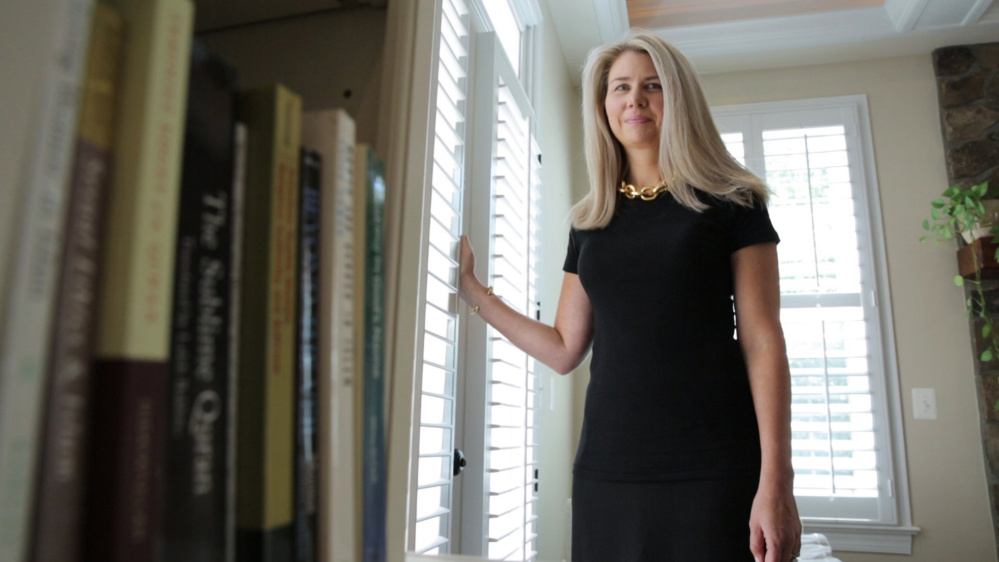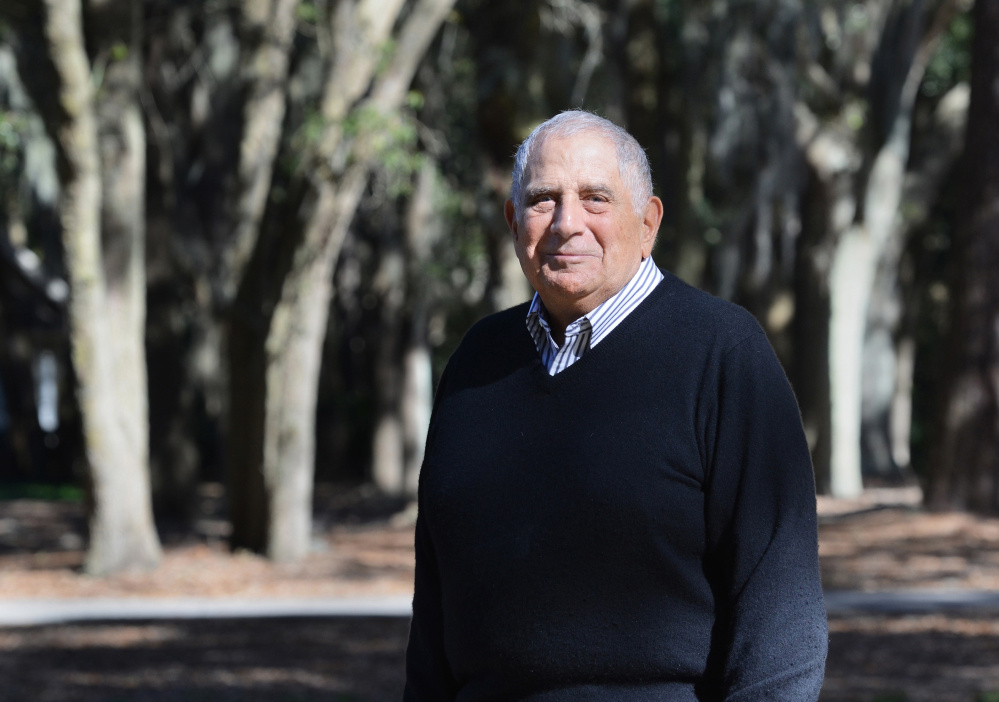When Jennifer Zobair sat down to write her first novel, she already had a muse in mind for the heroine, a glamorous, foul-mouthed Muslim woman whose high-profile job in Boston politics is on the line after a terrorist attack.
The character, Zainab, was inspired in part by Muslim political operative Huma Abedin, a longtime aide to Hillary Clinton and vice chairwoman of Clinton’s 2016 presidential campaign. Zainab and her fictional friends struggle to balance their high-pressure jobs with family expectations, like many real-life Muslim girlfriends of the author, an Iowa-born convert to Islam. And although terrorists are central to the plot, Zobair said, she was determined not to let them overshadow the romance at the heart of the story.
“I was thinking of people with anti-Muslim views and thought, ‘Can I change that? What would it take?'” Zobair recalled in an interview at her home in Virginia. “Well, it’s got to be love.”
Unfortunately for Zobair, her book, “Painted Hands,” was released in spring 2013, coinciding with the Boston Marathon bombing, in which two radicalized Muslim brothers killed three people and wounded more than 250. Reviewers wouldn’t touch a Muslim love story set in Boston, Zobair said. And so she watched as the novel she’d hoped would introduce book clubs to the unseen lives of ordinary Muslim families instead got lost in the nonstop coverage of homegrown terrorists.
“It was sad because the publicist kept saying, ‘This is a time where people need to read your book, because it’s showing what Muslim-American lives are like in a way that people don’t see,'” Zobair said. “But we just could not get any traction. It was just really unfortunate timing.”
sTEREOTYPES REMAIN
This unhappy ending is familiar to Muslims across the arts who are struggling to diversify depictions of Islam only to confront hardened stereotypes and a lack of executive-level support across the creative fields. In more than a dozen interviews, Muslims working in mass media named three common archetypes representing a faith with more than 1 billion followers: the terrorist “bad Muslim,” the hyper-patriotic “good Muslim,” and the oppressed woman yearning for liberation.
The past couple of years have yielded a handful of breakout moments, but representation of Islam remains overwhelmingly narrow and negative – a problem that’s not only unjust on its own, but one that also stokes anti-Muslim prejudices at home and gives ammunition to jihadist recruiters abroad, according to media critics and counter-extremism specialists.
“Let’s use our heads here and think about the enemy in this case,” said Jack Shaheen, a media scholar who has tracked depictions of Arabs and Muslims for 40 years and is widely considered the nation’s foremost expert on the subject. “Every time an American leader or TV show vilifies American Muslims or Arabs, that’s a propaganda tool to say, ‘See what America thinks of you? See how Americans talk about you? We’re ISIS, we’re ISIL, we love you, come to us.’
“It’s dangerous,” Shaheen continued. “Why is there this reluctance to attack this bigotry at the highest levels?”
During his landmark visit to a Baltimore mosque in February, President Obama drew applause when he noted the “hugely distorted impression” left by programs that show Muslims only in the context of terrorism.
“Our television shows should have some Muslim characters that are unrelated to national security,” he said.
Not two weeks after Obama’s remarks, however, “The X-Files” became the latest TV show to cast Muslims as extremists, in this case militants who blow up an art gallery in Texas. Muslim sci-fi fans vented on social media about what they called gratuitous, nonsensical religious references in the storyline, as if the script writers had gone out of their way to make American Muslims seem foreign and dangerous.
“We are doing all these normal things that you don’t pay attention to,” Zobair said of the absence of mainstream Muslim roles.
“We’re a part of you. When you keep this narrative up, you’re keeping us all from knowing each other.”
CALLED IN GOOD FAITH
Zobair, who grew up Catholic, said her embrace of Islam came from the heart – first through the close friendship of a Kuwaiti woman at Smith College and, later, through her marriage to a Pakistani-American from a conservative Muslim family. In suburban Virginia, the couple have built a modern Muslim family that doesn’t fit the Hollywood tropes: South Asian attorney dad, unveiled blonde novelist mom, their two biological children and an African-American son they adopted.
Their multicultural household isn’t an anomaly – because of the diversity of Muslims in the United States, intermarriage is common among Arabs, South Asians, Central Asians and African-Americans. However, Zobair said, you wouldn’t know that from the limited depictions on TV or in the movies.
Perhaps that’s why, gradually, despite the unfortunate timing and lack of promotion, Zobair’s novel drew notice in the burgeoning world of Muslim-focused women’s fiction, or “Muslim chick lit.” Fellow Muslims weren’t necessarily Zobair’s target readers, but they’re the ones who began emailing.
“Muslim women started writing to me, saying, ‘This is the first time I identified with a character in a book,'” Zobair said. “And then people started writing to say thank you for making Muslims look normal. And that was really sad. ‘To look normal.’ Like, for the first time, we’re not terrorists.”
OBAMA OPENS DISCUSSION
Until Obama’s comments in February, there had been little national discussion of the issue, save for a flurry of interest in October 2015, when two artists seized the chance to protest depictions of the Middle East and Muslims on “Homeland.” Hired to add Arabic graffiti to a “Homeland” set depicting a refugee camp on the Lebanon-Syria border, the artists instead wrote slogans in Arabic such as “Homeland is racist.”
No one spotted the prank, so the graffiti made it into a broadcast that reached millions of homes. The story quickly circulated on social media, forcing “Homeland” creators to confront Muslims’ frustrations with the show. “Homeland” producer Alex Gansa told the entertainment magazine Deadline that he’d wished producers had been more alert, but also expressed grudging admiration for “this act of artistic sabotage.” “Homeland” executives did not respond to requests for comment.
One of the artists involved, Heba Amin, said she doubts that the incident led to any real soul-searching on behalf of the “Homeland” team – and that wasn’t the point.
“The point was to start a discussion that is, in fact, happening, and to shine the light on a show that is totally absurd but obscenely popular,” Amin said. “In this case, I think we did our job.”
Send questions/comments to the editors.




Comments are no longer available on this story